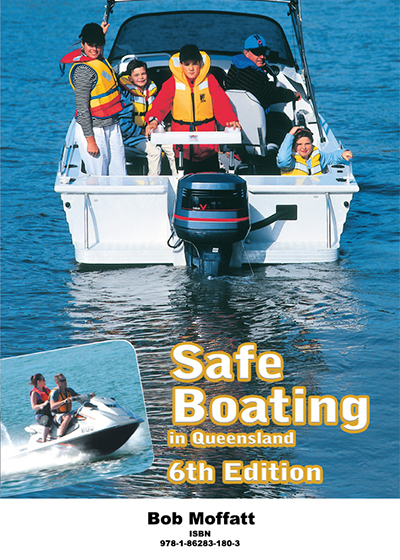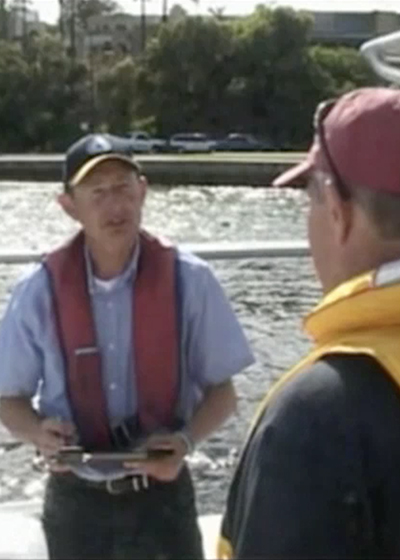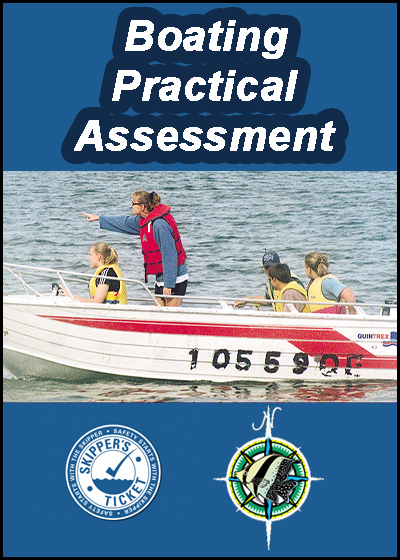Safe Boating in Queensland 6th Ed

ISBN : 978-1-86283-180-3 (2025 E Pub)
Published Date : 01 January 2025
Product Code : Item 12
Format : Downloadable pdf lifetime licence
By Bob Moffatt
Wet Paper publications non-commercial school licence
The publisher and author/s of this pdf file grant to the school a revocable, non-exclusive, non-transferable right and licence to use the content, exercises, lab and field work lesson notes within the school for educational purposes only.
Yearly record keeping
To ensure fair payment is made to collecting societies, educational institutions are to record the digital ISBN above.
- To do this go to the school office and ask the IT department or whoever looks after digital book licences to record the ISBN in the school digital library licence catalogue.
Copyright
Except as permitted by the Copyright Act 1968 (Cth), you may not reproduce any of the contents of this publication, without the written permission of the copyright owner.
The title to, and intellectual property rests with the publisher's author/s, illustrators, photographers and design consultants and nothing in the agreement should be construed as transferring those rights to the school.
Educational exemption
There are exemptions under the Act that allow educational and government use of text, images and music scores for educational purposes.
These exemptions are in Part VB of the Copyright Act 1968 (Cth), where you are entitled to reproduce or communicate 10% of the words or one chapter from this file for educational use within your school. If you wish to reproduce or communicate MORE than 10% contact the copyright owner.
For more information, see www.copyright.com.au and www.copyright.org.au.
Sample pages
Teachers Information
Boatsafe
Approved course notes for use by Queensland Boatsafe Training Providers and Schools
Free worksheets
The link to the worksheets below provide spaces for candidates to write their answers for their BTP to vertify prior knowledge.
Free practical assessment videos
The videos in this download link were developed by Laurie Adams, Rod Martin, Grant Hunt and staff from the Marine Education Boatshed in WA and have been linked with permission and thanks.
Note: The zip file is over 600Mb so allow time to download.
Contents
Unit 1 Trip planning
General safety obligation
Speed limits
Alcohol and drugs
Registration
Navigation lights
Safe operation
Properly equipping and crewing vessel
Buoyancy and insurance
Marine parks and pollution
Main parts of a small recreational vessel
Hulls (shape and depth)
Outboard motor
Controls and steering
Bow, stern and anchor well
Fuel tank/consumption
Deck
Battery
Safety equipment
Stowage, serviceability, bar crossings
PFDs - Personal flotation devices
EPIRB's
Personal items, fire extinguishers
Signalling equipment
V sheet, anchor, rope and chain
Pumping and bailing
Oars and flares
Queensland safety equipment regulations
Parts of the vessel requiring maintenance
Reliability and serviceability
Tools and spares
Seaworthiness
Hull integrity, stability and freeboard
Builders plates and capacity labels
Level flotation, basic flotation, no flotation
Unit 2 Navigation
The COLREGS
Responsibility (Rule 2), Proper lookout (Rule 5)
Safe speed rule (Rule 6), Risk of collision (Rule 7)
Action to avoid a collision (Rule 8)
Rivers and channels (Rule 9), Sailing vessels (Rule 12)
Overtaking (Rule 13)
Approaching bow of another boat (Rule 14)
Power driven boats crossing (Rule 15)
Action by give-way vessel (Rule 16)
Action by stand-on vessel (Rule 17)
Restricted visibility (Rule 19)
Responsibilities between vessels (Rule 18)
Water skiing rules, large ships in channels
Vessel definitions and terms
Lights, definition and visibility (Rules 20, 21 and 22)
For power driven vessels under way (Rule 23)
Sailing vessels under way and vessels with oars (Rule 25)
Vessels restricted in their ability to manoeuvre (Rule 27)
Fishing vessels (Rule 26)
Navigation at night and restricted visibly
Navigation at night and into the sun
Boats at anchor (Rule 30)
Flags and sound signals (Rule 32)
The IALA buoyage system A
Direction of buoyage, lateral marks
Entering and leaving a port - a practical exercise
Cardinal marks
Isolated danger marks, special marks
Middle channel marks, Emergency wrecks
Safe water marks
Lead lights
Sector and directional lights
Other navigation directives
Cable crossings
Anchorages, boat ramp signs
BoatSafe Bay summary
GPS navigation system use and limitations
How the GPS system works
Operation of a chart plotter, highway mode
What you will learn in a navigation and gps course
Suitability of the chart plotter and datum checking
Unit 3 Weather and tides
Weather
Tides
Unit 4 Emergencies
Define and report a marine incident
Respond to a fire on board
Communication systems
Use of appropriate emergency radio calls
Recognised distress signals
Emergency radio calls
Unit 5 Manoeuvring
Departing the launching facility
Get the boat onto the plane
Crossing a wash, complete a figure of eight
Towing
Make an emergency stop, pick up a mooring buoy
Man overboard, tie a bowline in a length of rope
Anchor the vessel, control the trim and tilt of the engine
Leave a jetty
Return to a jetty
Return to a beach
Unit 6 Personal water craft
General safety obligation, licences, registration
Ridesmart sticker, freestyling definition
Steerage, safety equipment, predeparture checks
On the water, safety equipment requirements, speed limits
Self study guide for short courses
Glossary of terms
Regional Government office phone numbers





